Warsaw - guide 
Sights and attractions - What should you not miss in Warsaw? The Old Town with the castle, the National or Rebel Museum,...
Accommodation - What to give priority to? Pension or apartment? Luxury or classic hotel?
Typical food and drink - What you should definitely try in Warsaw - pierogi, bigos or maybe local vodka.
Practical tips - Here you will learn about local transport, where to relax, where to go shopping.
Weather - What temperatures and rainfall will greet you in the four seasons in Warsaw.
Celebrities - What famous personalities lived and worked in Warsaw?
Poem AI - What about Warsaw and its history invented by artificial intelligence?
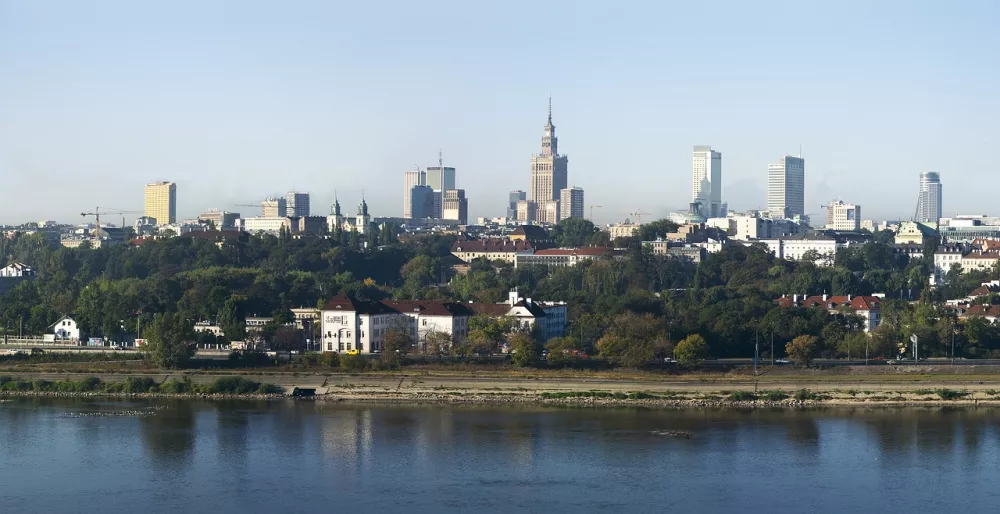
Warsaw, the capital of Poland, plays a key role in the country's politics, economy and culture. Approximately 1.8 million inhabitants live here and it covers an area of 517.24 km².
Warsaw is not only an independent administrative entity, but also the seat of the Masovian Voivodeship.
It lies in the central part of Poland and is connected to the Baltic Sea by the Vistula River.
The first mentions of Warsaw come from the 13th century. The city developed rapidly and in 1596 it became the capital of Poland when King Sigismund III. Vasa moved his court from Kraków.
During World War II, the city was almost completely destroyed by the Nazis. The Warsaw Uprising of 1944 was a significant but tragic chapter in the city's history. After the war, the city had to be extensively reconstructed.
Today, Warsaw is a modern metropolis with dynamic economic growth and a rich cultural life.
The main monuments and tourist attractions include The Old Town, the Royal Castle, the Spa Parks, the Palace of Culture and Science or perhaps the Warsaw Uprising Museum.
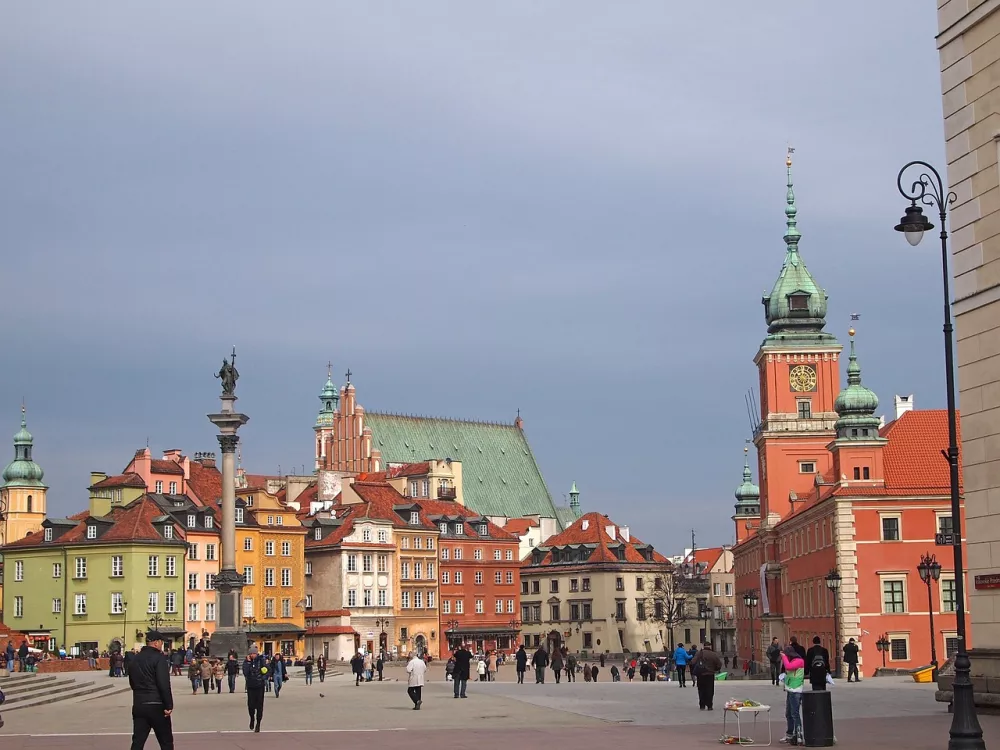
Warsaw has a well-developed public transport system, including the metro, trams, buses and commuter trains. There are also 2 airports and a train station.
Warsaw is home to many cultural institutions, including the National Theater (Teatr Narodowy), the National Philharmonic (Filharmonia Narodowa) and the Grand Theater (Teatr Wielki).
Important universities include the University of Warsaw (Uniwersytet Warszawski) and the Warsaw University of Technology (Politechnika Warszawska).
Warsaw, as the economic center of Poland, is home to many international companies, banks and financial institutions. The city has a developed service, IT and innovation sector. In recent years, it has also experienced a boom in the construction industry and the real estate market.
Warsaw, a fascinating city, offers a mixture of historical monuments, modern architecture and a rich cultural life. The past meets the present here. It has a lot to offer both locals and visitors from all over the world.
Sights and attractions
Warsaw offers many sights and attractions that are worth a visit. Here you will read not only about historical and cultural monuments, but also about modern attractions, parks and gardens that are worth a visit.
Old Town (Stare Miasto):
Royal Castle (Zamek Królewski) - Historic castle, destroyed during the Second World War and later carefully reconstructed. It now serves as a museum.
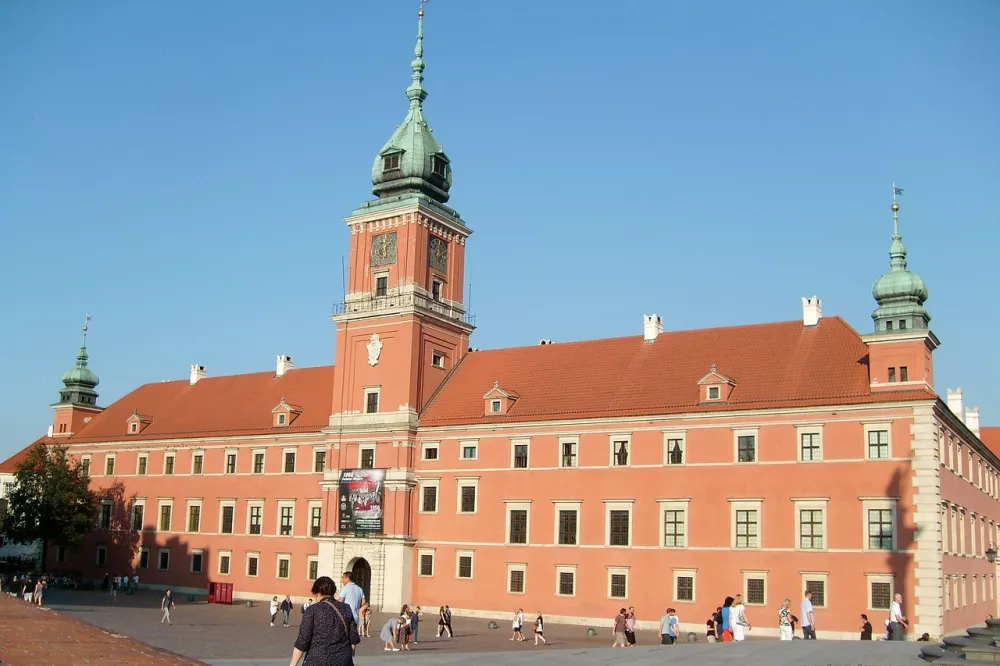
Cathedral of St. John the Baptist (Bazylika archikatedralna św. Jana Chrzciciel) - The main cathedral of Warsaw, significant for its historical and architectural values. They built it in the Brick Gothic style.
Barbican - Remaining defensive building from the 16th century, one of the few preserved parts of the original medieval walls.
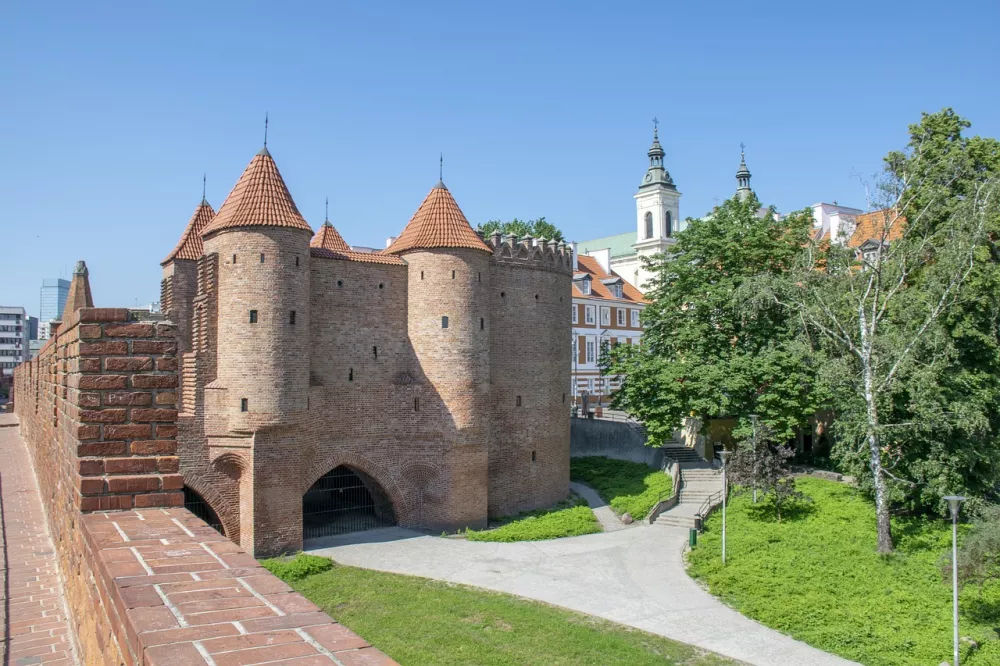
New Town (Nowe Miasto):
St. Casimir's Church (Kościół św. Kazimierza) - A baroque church with a rich history, which was built at the end of the 17th century and had to be completely restored after World War II.
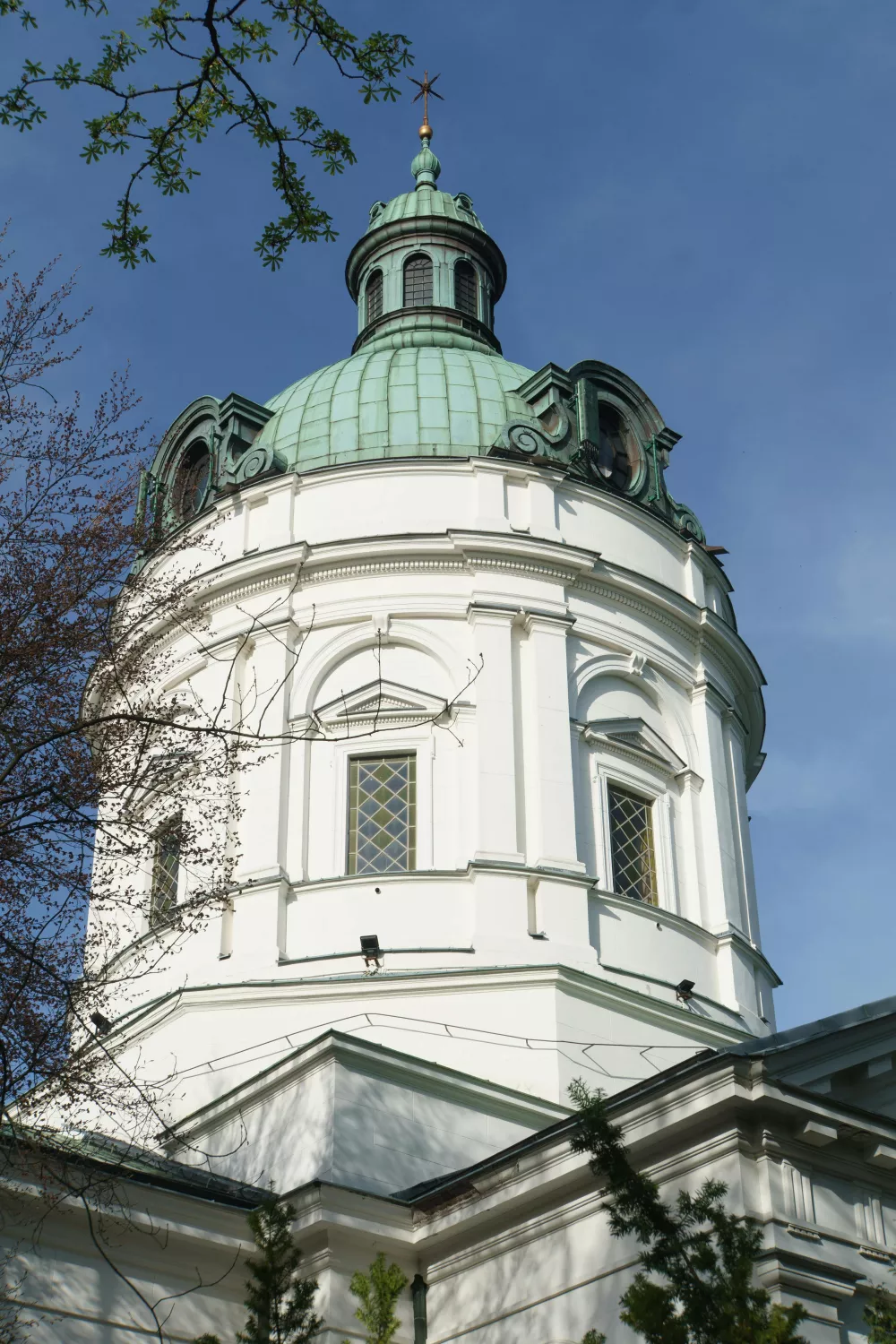
Rynek Nowego Miasta - Main square of New Town with historic buildings and restaurants.
Spa parks (Łazienki Królewskie):
Palace on the Water (Pałac na Wyspie) - A beautiful neoclassical palace in the middle of a vast park. It lies on the left bank of the Vistula River.
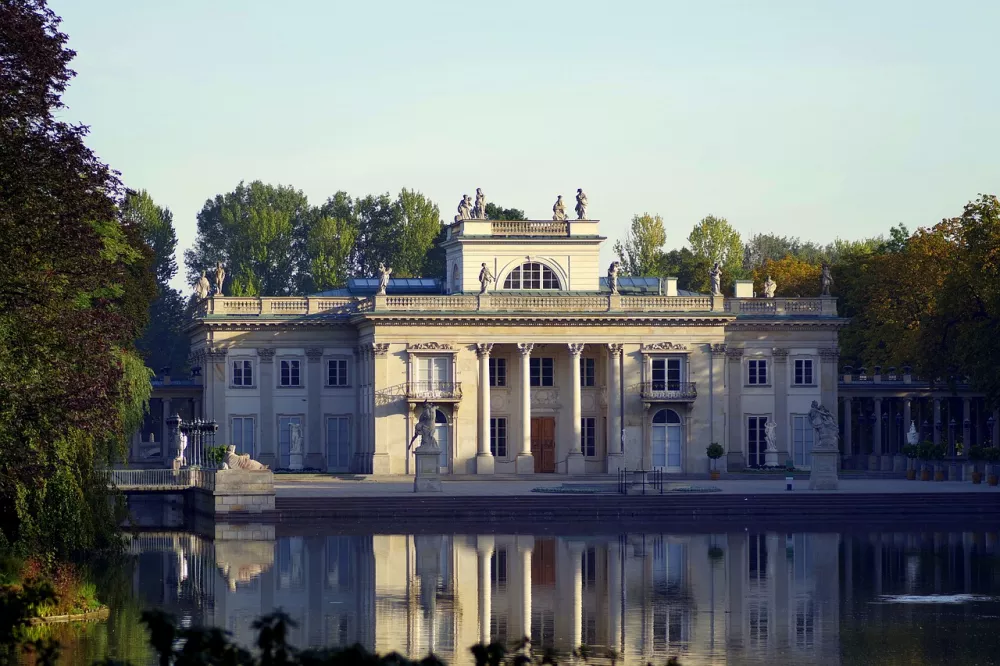
Fryderyk Chopin Monument - The famous bronze statue of the Polish composer in the beautiful Royal Baths Park. Classical music concerts are held here in the summer.
Wilanów Palace (Pałac w Wilanowie) - Baroque palace and adjacent gardens that served as the summer residence of King John III. Sobieski.
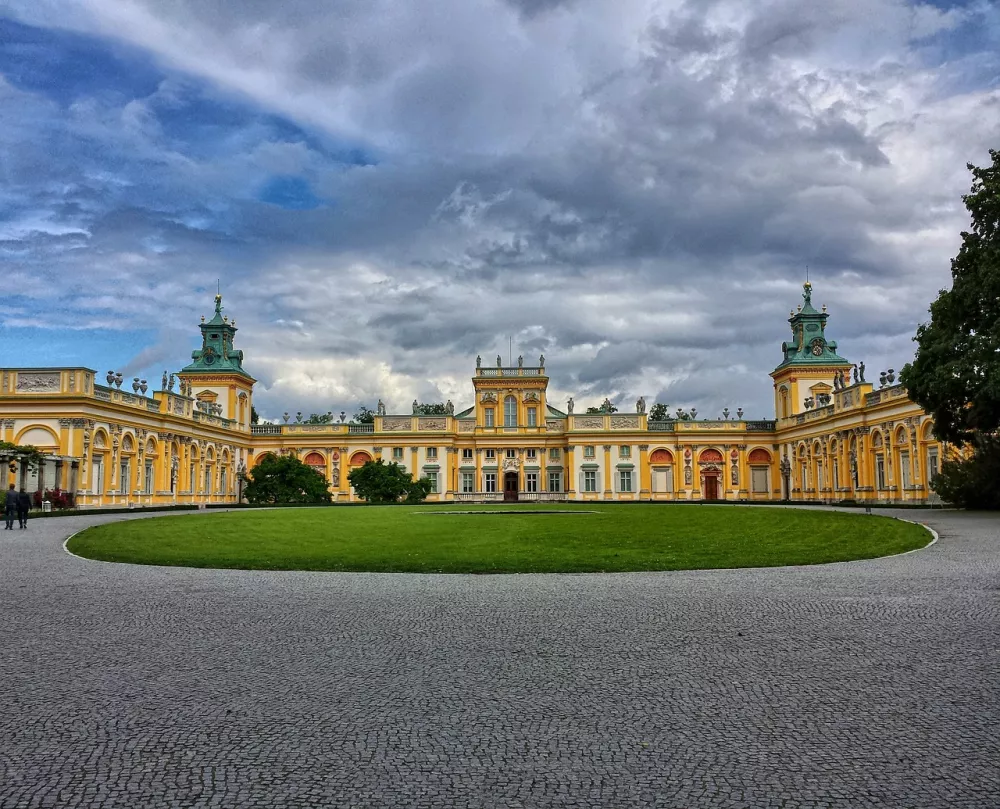
Palace of Culture and Science (Pałac Kultury i Nauki) - The tallest building in Warsaw built in the style of socialist realism. It offers a panoramic view of the city from the observation deck.
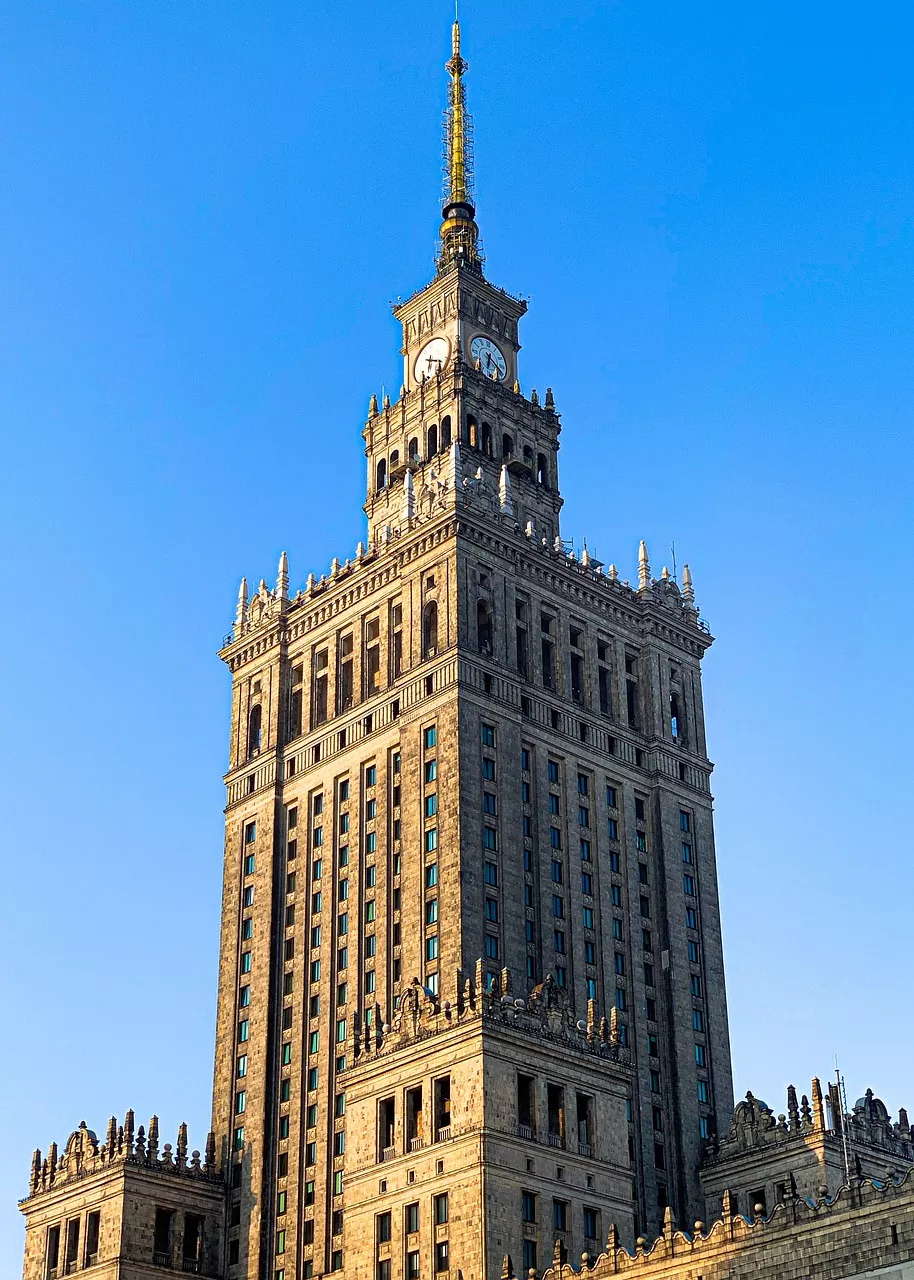
Warsaw Uprising Museum (Muzeum Powstania Warszawskiego) - An interactive museum documenting the Warsaw Uprising in 1944. It offers a deep insight into the history of Polish resistance and the heroism of Warsaw residents.National
Museum (Muzeum Narodowe) - The largest museum in Warsaw, which exhibits art from the Middle Ages to modern times.
Museum of the History of Polish Jews (POLIN) - A modern museum dedicated to the history and culture of Polish Jews, which has won many international awards for its architecture and exhibitions.
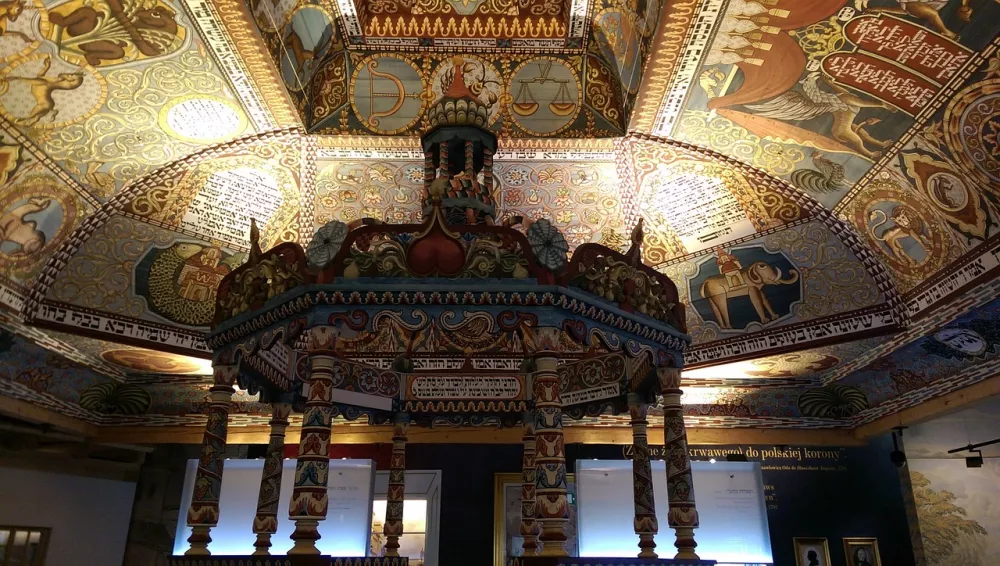
Warsaw Market (Hala Mirowska) - Historic market where you can buy fresh food and local specialties. They built it at the turn of the 19th and 20th centuries.
Copernicus Science Center (Centrum Nauki Kopernik) - A modern science center with interactive exhibits and a planetarium that is attractive to visitors of all ages. Here, visitors can conduct experiments and discover the laws of nature.
Fryderyk Chopin Museum - Museum dedicated to the life and work of the famous Polish composer, located in the historic Ostrogski Palace.
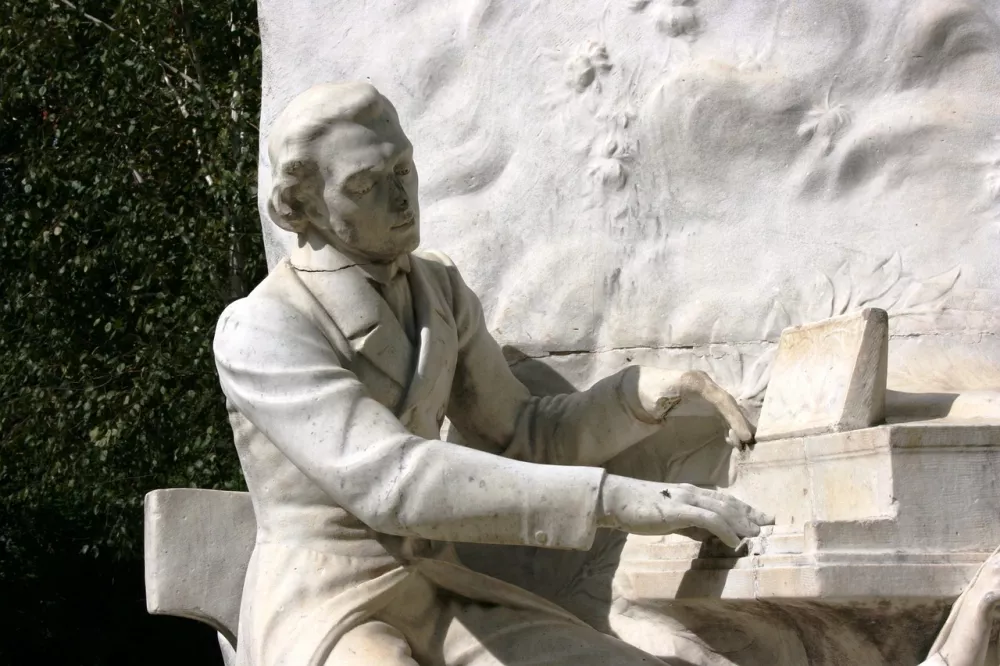
Praga – Historic district on the east bank of the Vistula River, known for its bohemian character, art galleries and lively night scene.
Accommodations
In Warsaw, you can choose from almost 6,700 different accommodation facilities. From luxury hotels to classic 3- and 4-star hotels, guesthouses and apartments. You will also find many cheap hostels here. There is also accommodation with a swimming pool.
And where is the best place to stay? It depends on why you came to Warsaw: A classic tourist will probably choose the Old Town close to the main attractions.
Praga is famous for its bohemian character and art scene, but it is a bit further away from the tourist centers.
Śródmieście, a modern district with many hotels, restaurants and shopping options offers almost everything except historical monuments.
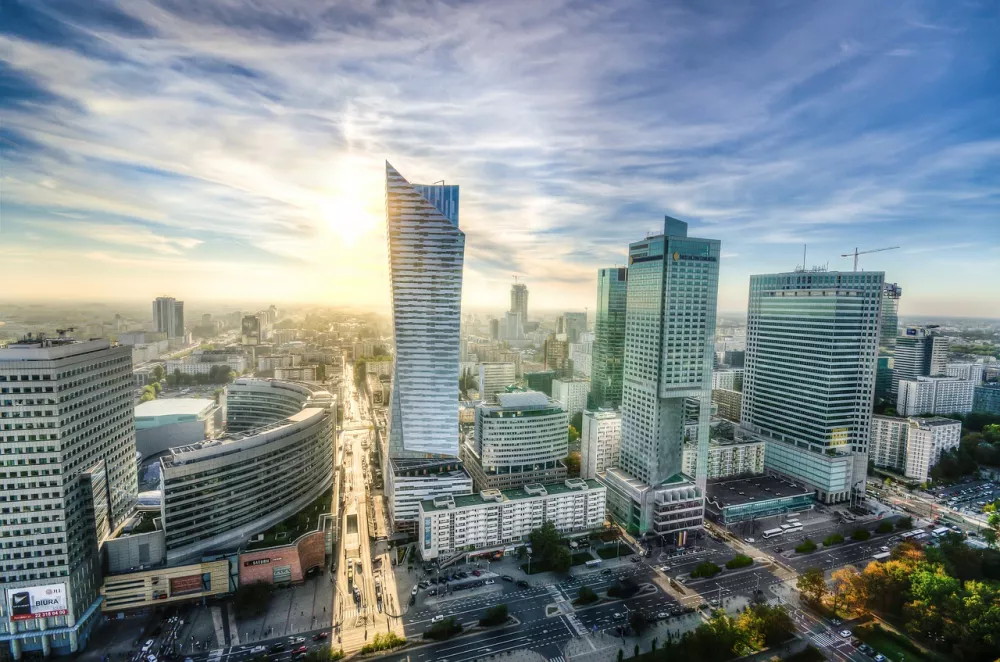
One of the most luxurious and popular hotels, Raffles Europejski Warsaw can be found on the famous Royal Road, not far from the Polish National Opera. It has been operating as a hotel for over 150 years. Guests can enjoy valet service as well as unlimited access to the Raffles Spa. There is also a restaurant, bar and cafe.
Lovers of modern architecture will definitely like the 4* Crowne Plaza - Warsaw - The HUB, an IHG Hotel. You can find it a short distance from the city center, about 700 meters from the Warsaw Uprising Museum. The hotel offers private parking, a fitness center with a sauna, a sun terrace, a children's playground and a kids' club.
Among the 3* hotels, we can recommend Campanile Warszawa Północ, which is located about 7 km from the center and is easily accessible by car or public transport. This affordable hotel offers sufficient capacity even for groups, there is also a restaurant and a business center. At the 24/7 reception, they will be happy to give you advice or store your luggage. Some rooms are wheelchair accessible.
If you are looking for quiet accommodation in an apartment outside the center, check out Apartamenty Pokoje Willa Bielany. It is located about 7 km from the city center and is surrounded by a garden with a terrace. You can park here for free in the private parking lot.
Cheap accommodation in the city center is offered by HALBY rooms Prosta 2. You can stay here in a single or double room with a shared bathroom. You can find this guest house in the popular Wola district. A kettle, bed linen and a towel await guests in the room.
For a complete offer of accommodation in Warsaw, we recommend using A-HOTEL.com or Booking.com.
Typical food and drink
Pierogi - Traditional filled sweet and savory dumplings. They can be filled with various fillings, such as cheese, cottage cheese, meat, cabbage, mushrooms or fruit.
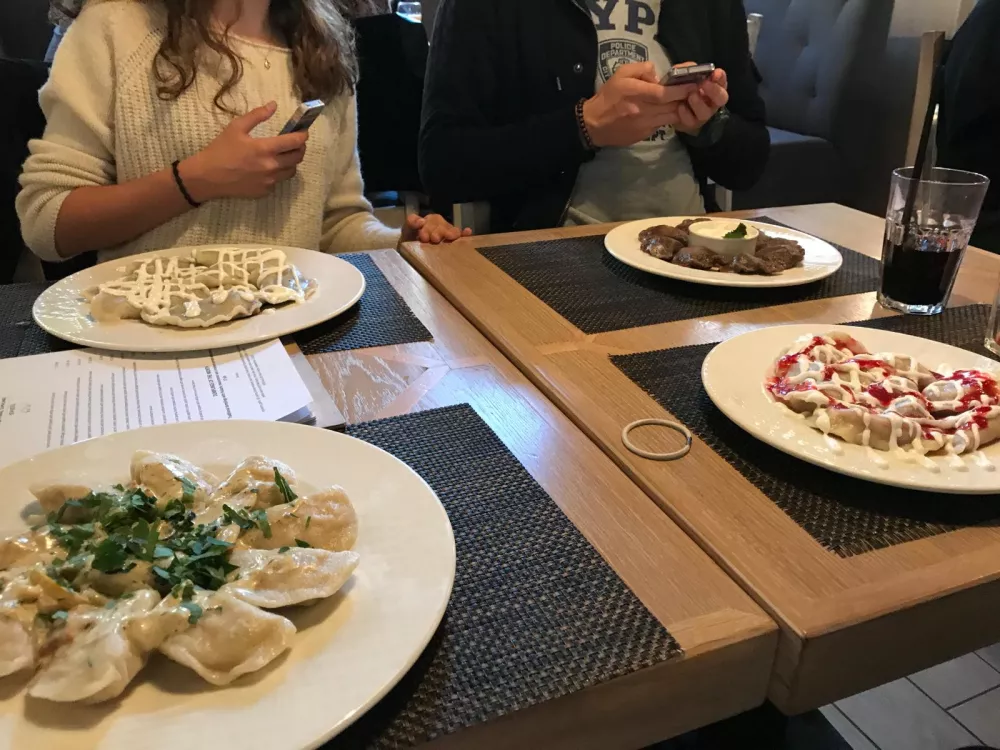
Warsaw tripe or flaki – Thick tripe soup according to a local recipe. The dish has a distinct flavor and a rich, meaty consistency.
Bigos - A thick stew made from sauerkraut, fresh cabbage, various types of meat and sausage. Sometimes dried plums or mushrooms and various spices are added.
Żurek - Sour rye soup, often served with boiled potatoes, sausage and a boiled egg. It is traditionally prepared in a bread loaf.
Gołąbki - Cabbage roll filled with a mixture of minced meat, rice and spices. It is often served with tomato sauce.
Wódka – A well-known Polish alcoholic drink. It is often served neat and chilled. Popular brands include Żubrówka (with bison grass), Belvedere and Chopin.

Kompoc - A traditional soft drink made from boiled fruit such as apples, pears or prunes. It is served cold or hot.
Pączki - Traditional Polish donuts filled with jam or other fillings, often sprinkled with sugar or drizzled with icing.
Practical advice for the trip
Warsaw has a good public transport system that includes the metro, trams, buses and commuter trains. You can buy all-day or multi-day tickets that are valid for all modes of transport.
The fast and efficient metro has two lines – M1 and M2.
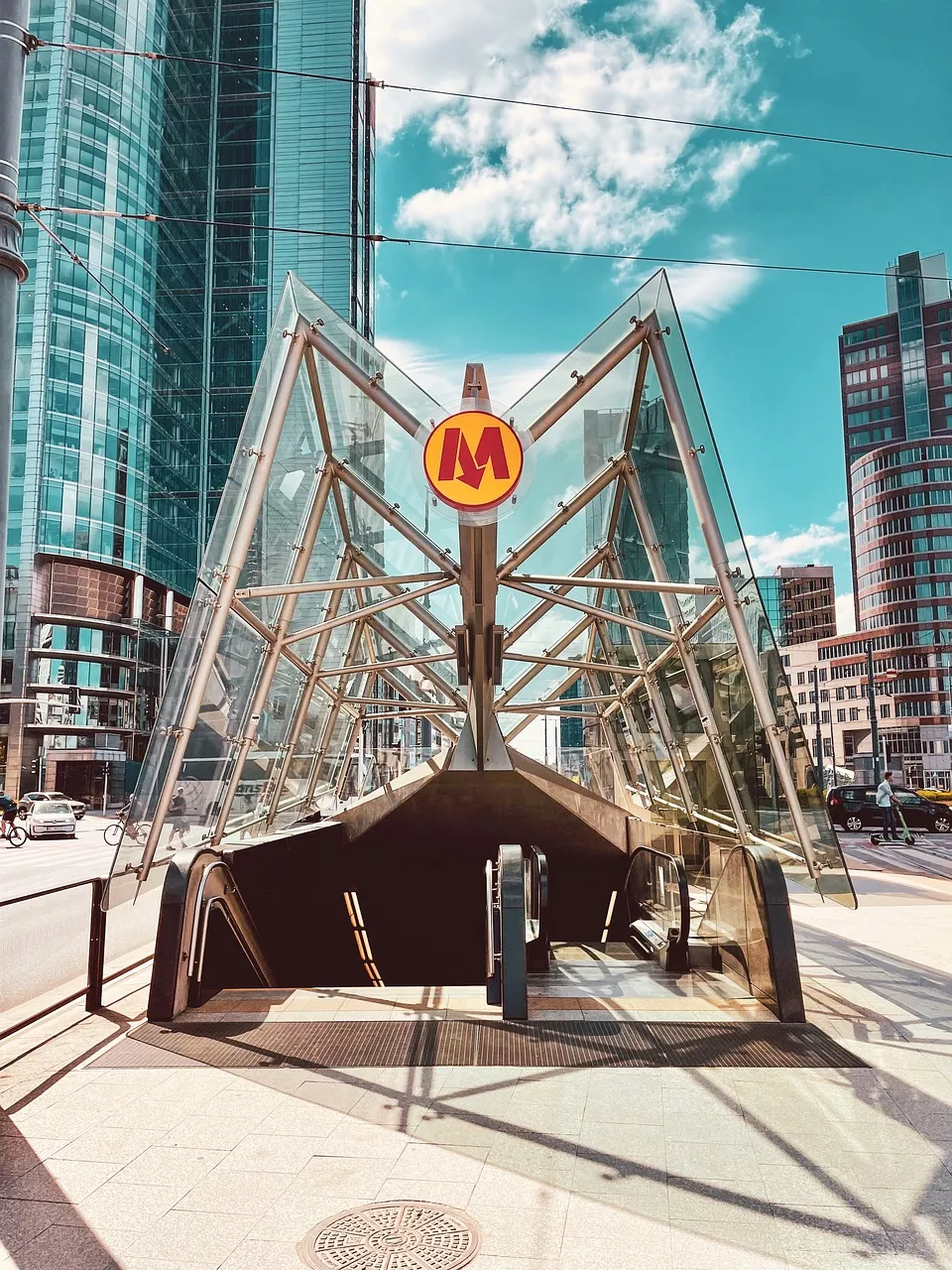
The center and the Old Town with the main sights are best explored on foot.
Most shops and restaurants accept credit cards, but it is better to exchange even a small amount in zlotys for small purchases.
Warsaw is generally a safe city, but be careful with your personal belongings, especially in tourist areas and on public transport.
Visit the tourist information center for maps, brochures and other useful information.
Where to go when you want to take a break from the busy city?
In summer, the banks of the Vistula River are a popular place for relaxation and walks. You can also rent a bike and ride along the river on the bike path.
The historic Wilanów Palace with its beautiful gardens beckons for a stroll. Although it is located on the outskirts of the city, it is easily accessible by public transport.
And where to shop? To buy fresh food and souvenirs, you can visit Hala Mirowska or the market on Defilad Square.
Large modern shopping centers with many shops and restaurants are for example Złote Tarasy or Arkadia.
In Warsaw, you can also visit the modern National Stadium - the largest football stadium in Poland, with a capacity of nearly 60 thousand visitors.
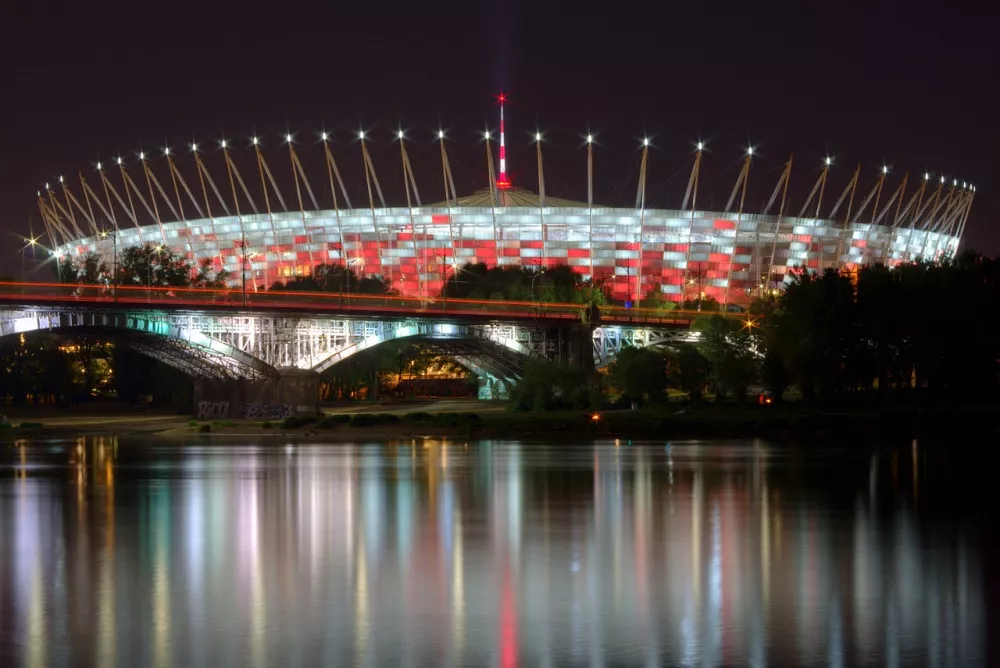
Weather
In Warsaw, you can experience a mild continental climate with significant differences between the seasons.
In spring, average daily temperatures range from 5°C in March to 20°C in May. The changeable spring starts colder with frequent showers, but gradually warms up. May is usually pleasant with mild to warm weather.
In summer, average daily temperatures range between 18°C and 30°C. Occasional heat waves can raise temperatures up to 35°C.
Summer is warm to hot, with longer sunny days. It often rains, and thunderstorms may occur, especially in the afternoon.
In autumn, average daily temperatures drop from 15°C in September to 5°C in November. Autumn starts warmer, often sunny, but gradually cools down and rainy days come. October and November can be colder and rainier.
In winter, average daily temperatures range between -5°C and 3°C. Night temperatures drop to -10°C.
It sometimes snows in the winter months. January and February are the coldest months.
Celebrities
Fryderyk Chopin (1810–1849) - Famous composer and pianist. He was born in Żelazowej Woli, near Warsaw, and spent his childhood and early adolescence in the city. The Chopin Museum in Warsaw is one of the main tourist attractions here.
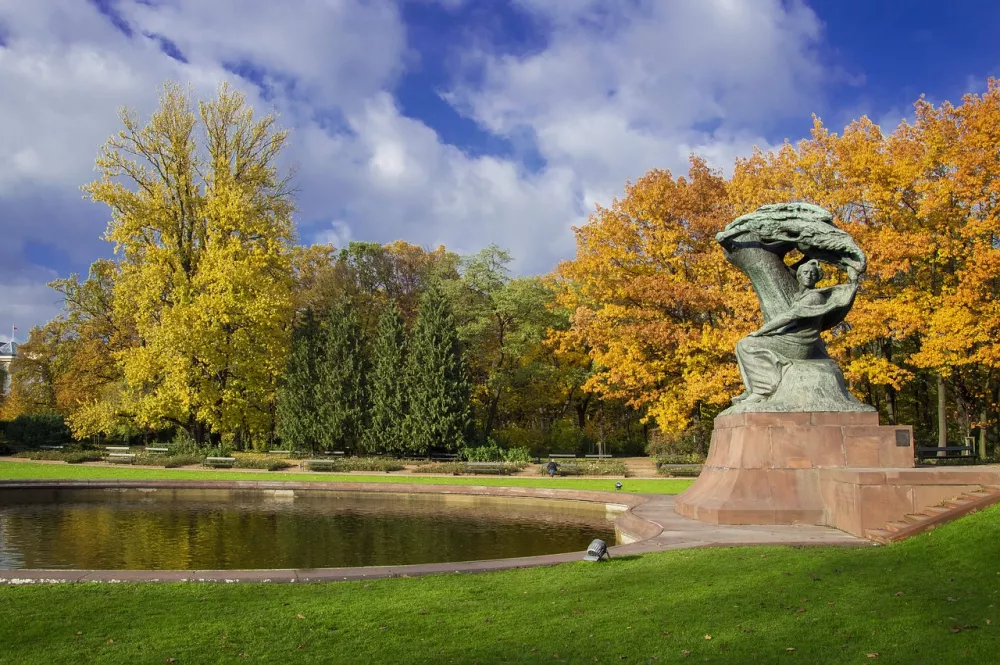
Marie Curie-Skłodowská (1867–1934) - Two-time Nobel laureate in physics and chemistry. She was born in Warsaw, where she began her scientific career before moving to Paris.
Józef Piłsudski (1867–1935) - Leader of the Polish liberation movement and the first head of independent Poland after the First World War. Warsaw has several monuments and places named after Piłsudski, who lived and later died here.
Ludwik Zamenhof (1859–1917) - Creator of the international language Esperanto, but also an ophthalmologist and philologist. He was born in Białystok, but spent a large part of his life in Warsaw.
Bolesław Prus (1847–1912) - Leading Polish writer and journalist. His novels, including "Loutka" (Lalka), provide a deep insight into life in 19th century Warsaw.
Isaac Bashevis Singer (1902–1991) - Winner of the Nobel Prize for Literature, who was born in Poland and spent part of his life in Warsaw. His works often reflect the life of Polish Jews before the Holocaust.
Witold Lutosławski (1913–1994) - One of the most important Polish composers of the 20th century. He also worked as a conductor. He was born in Warsaw.
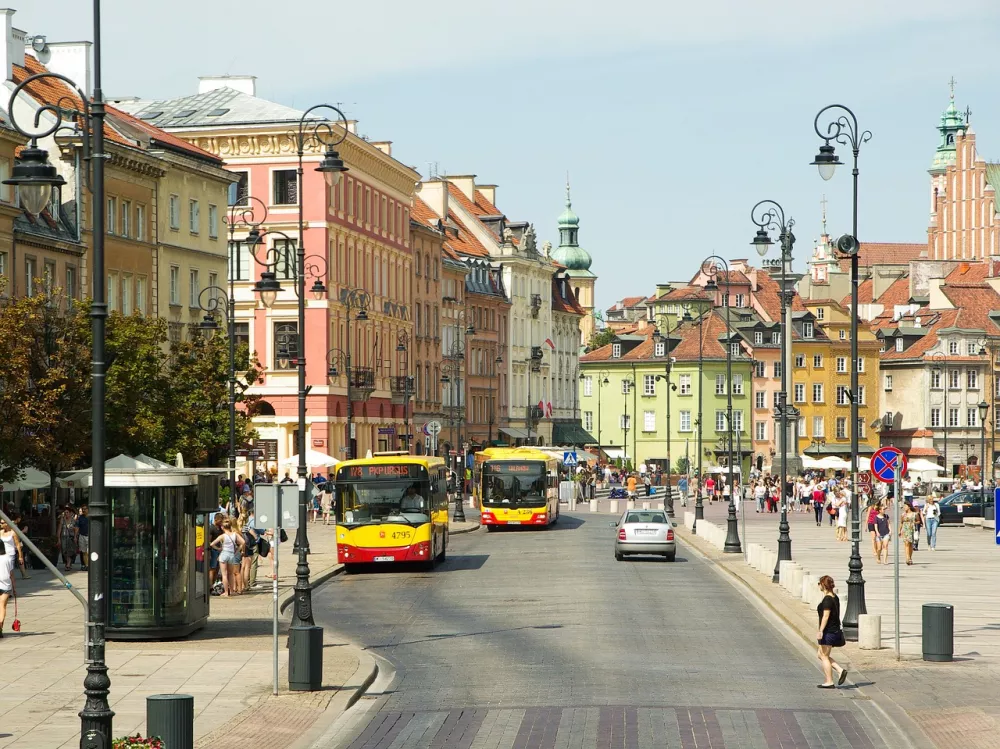
A poem about Warsaw created by artificial intelligence
Warsaw song
In the heart of Poland, by the Vistula River,
the city of kings, famously sounded,
Warsaw rose from the mists,
over time it led its own destiny.
From the walls of the kings, the golden throne,
Where Chopin played his piano,
From there mighty music sounded,
People's hearts, into their veins.
Marie Curie, light of science,
From Warsaw she directed her step,
She changed science forward forever,
Poland is famous thanks to her.
Years go by, storms roar,
The city burns the smoke of war,
People suffer, but not bow down,
He stands proud, calm in his heart.
Rise of heroes, strength in blood,
In the fight for freedom, for every finger,
Every street has its own story
Every stone hides tears.
But Warsaw rises from the ashes,
Like a phoenix, beauty rises again,
Proud, strong, unbreakable,
He guards his history in his heart.
Parks, castles, monuments,
Music, art, science shine,
Life is full in Warsaw,
It is a city that has a face.
Today, Warsaw is full of life,
Where the old meets the new in the fall
Where every corner has its stories,
And every day is a new beginning.
In the heart of Poland, by the Vistula River,
city of kings, famous sounds,
Warsaw, where history lives on
Where dream and reality merge.